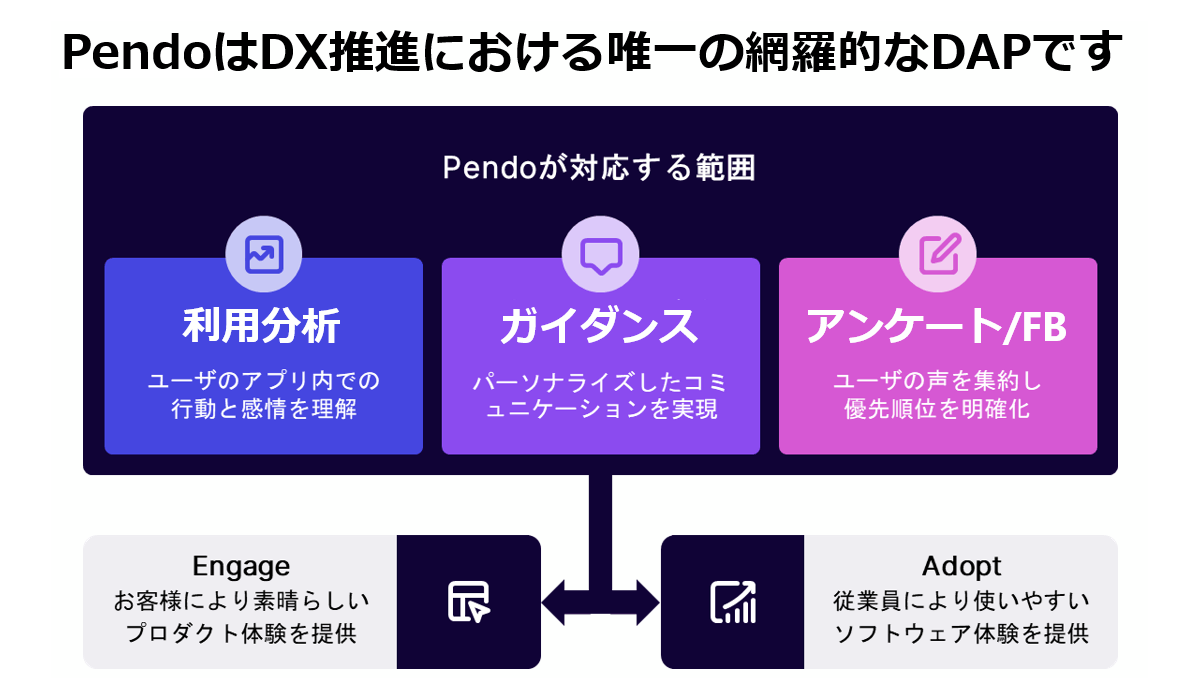What are common mistakes when introducing an in-house system? Three points to keep in mind when introducing
table of contents
- Introduction
- Failure example of system introduction
- The key to successful system introduction - 3 points to be aware of when introducing the system -
- What is a Digital Adoption Platform (DAP)? ~70% of organizations will adopt it by 2025~
Introduction
Companies are shifting to the cloud at an accelerated pace, and an increasing number of companies are introducing multiple systems* to improve operational efficiency.
*System examples: SaaS, core systems, self-developed systems, etc.
On the other hand, it is not always the case that the expected effects will be exhibited after the introduction, and it is a common story that the introduction ends in failure. After careful consideration, why did it fail?
In this article, we will introduce examples of failures in system introduction and "digital adoption" that is essential for success.
Failure example of system introduction
The following two points can be cited as examples of failures in system introduction.
- Low cost of introduction
- The scope of introduction is expanded too much, and the areas covered by existing products overlap.
- It has only unnecessary functions
- Even if it is introduced, it is not used by users
- Difficult to operate the new system
- The manual is too large for users to read
In addition, the environment surrounding the company, such as the following, is also considered to be a factor in the failure of system introduction.
- Lack of strong IT decision-making personnel
・The policy at the examination stage was not clear and did not meet the purpose - Insufficient post-implementation support system
・Difficulty in communication between the IT department and the field department
・Unable to respond to a large number of inquiries
・Vendor selection error
The key to successful system introduction - Three points to be aware of when introducing the system -
There are many such failure cases. Many companies of all sizes face similar challenges. What points are necessary to prevent the result that "I could not use it even though it should have been carefully selected when considering it in the IT department"? Here are three points to keep in mind when installing.
- Clarification of introduction purpose and coverage
・Have the same criteria for decision-making in management and on-site
・Adjust the merits of both the site and the IT department in advance - Consideration of operation in line with business processes
・Create a system for system utilization that makes use of voices from the field
・Minimize friction at the time of introduction and do not reduce productivity - Planning and regular confirmation of introduction effect creation
・Quantification and analysis of user utilization status
・Creating an environment that users can utilize
Regarding 1, it is raised as a common issue in many companies. In recent years, an increasing number of companies are hiring CIOs and CTOs with specialized knowledge who can take a broad look at the operations of the entire company and decide how to implement the system, so it is possible to start immediately. maybe you can. Regarding 2 and 3, the current situation is that there are many companies that do not know where to start, such as user literacy, organizational culture, and lack of tools.
The solution to this is the existence of Digital Adoption Platforms (DAPs).
What is a Digital Adoption Platform (DAP)? ~70% of companies will use it by 2025~
Digital adoption means providing an environment in which anyone can use software autonomously, efficiently improving user satisfaction (CX) and productivity based on user utilization data, and maximizing the effects of software introduction. The idea is to bring it out.
The solution that achieves this is called a Digital Adoption Platform (DAP).
The functions that can be realized with DAP can be broadly classified into three categories.

According to a research firm, ``70% of organizations will use digital adoption solutions by 2025,'' and many companies are currently considering it.
Macnica started handling "Pendo" as a DAP solution in 2021.
Pendo not only has a function to guide user operations, but also has excellent analysis functions to collect quantitative (usage data) and qualitative (user survey) data, and visualize logs, and its feature is that it can provide these without code. .

Here are three reasons why you need to do analysis, not just guidance:
- Because it is necessary to provide guides according to the user's proficiency
- It will be possible to optimize IT investment by making use of utilization data
- To detect dangerous user actions
If there are too many guides, the effect will be drastically reduced, so it is necessary to provide guides according to the user's proficiency level. Therefore, when considering a DAP, whether or not it has an analysis function is an important factor. In addition, by utilizing the analysis function, not only "prevention of failure" but also "success" such as improving ROI by optimizing IT investment becomes more realistic.
The introduction of a new system is the turning point between the success and failure of an IT investment.
How about considering DAP in order to promote appropriate utilization without reducing user productivity at the time of introduction?
If you would like to know more about the "Advantages and Disadvantages of Digital Adoption", please see "What is Digital Adoption? Explaining the Advantages and Challenges".